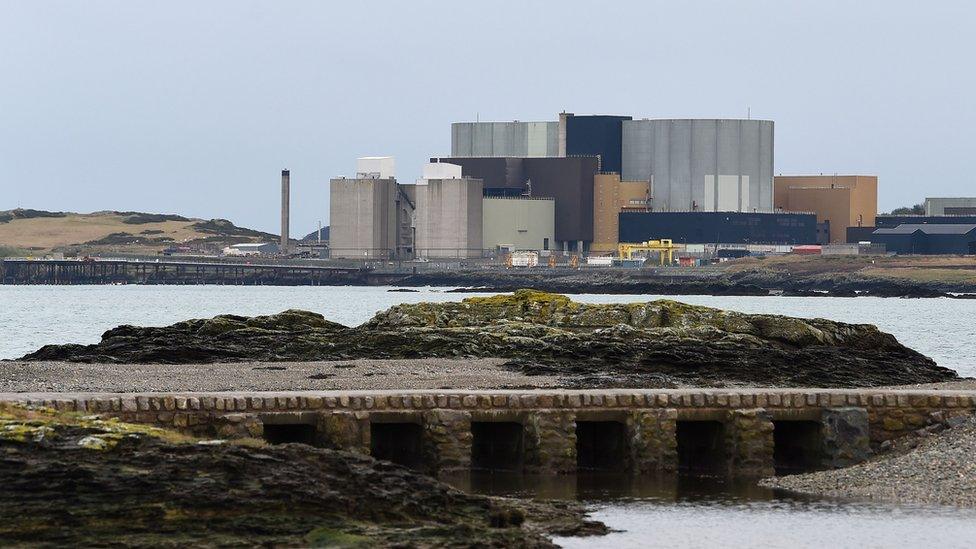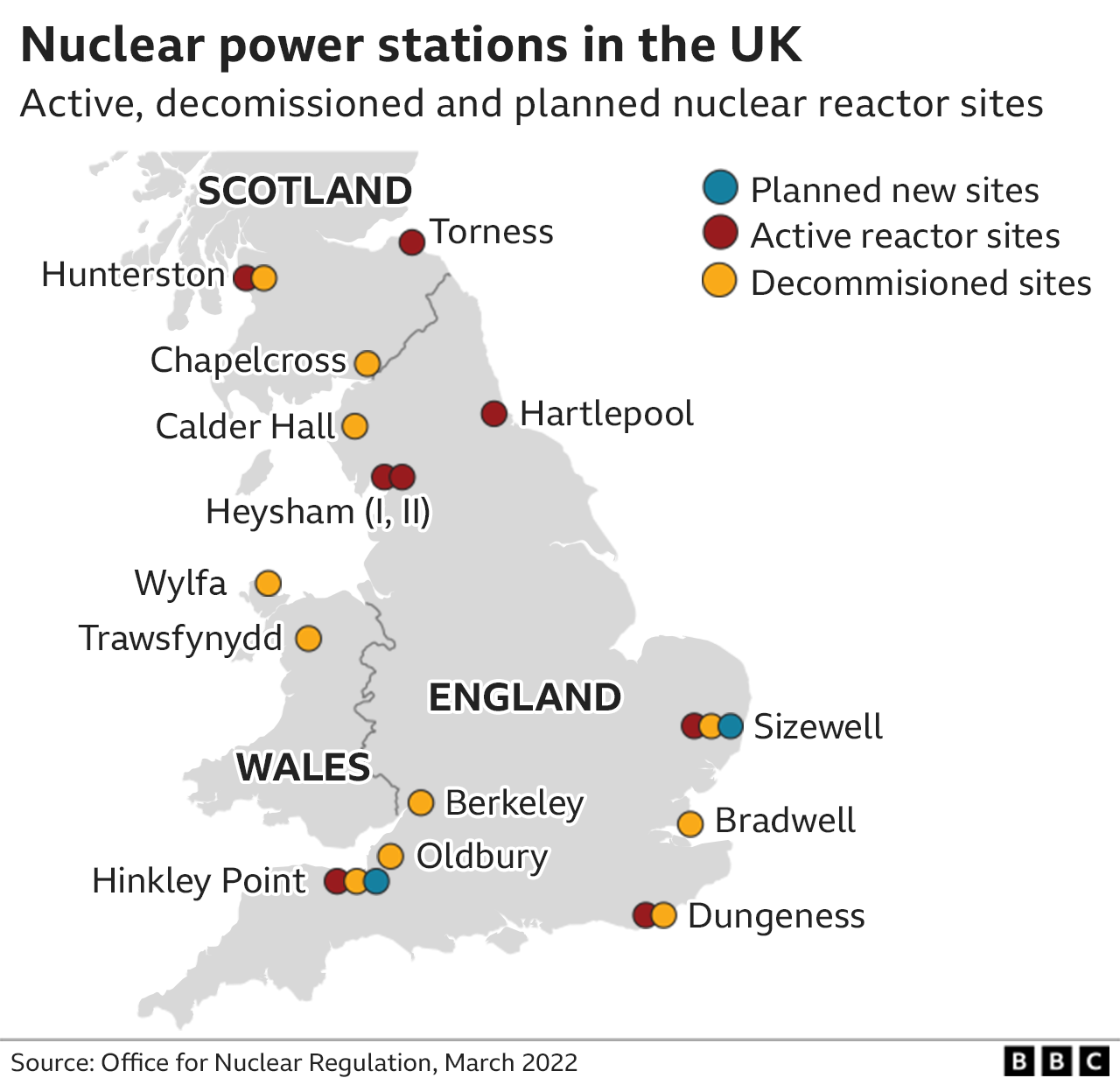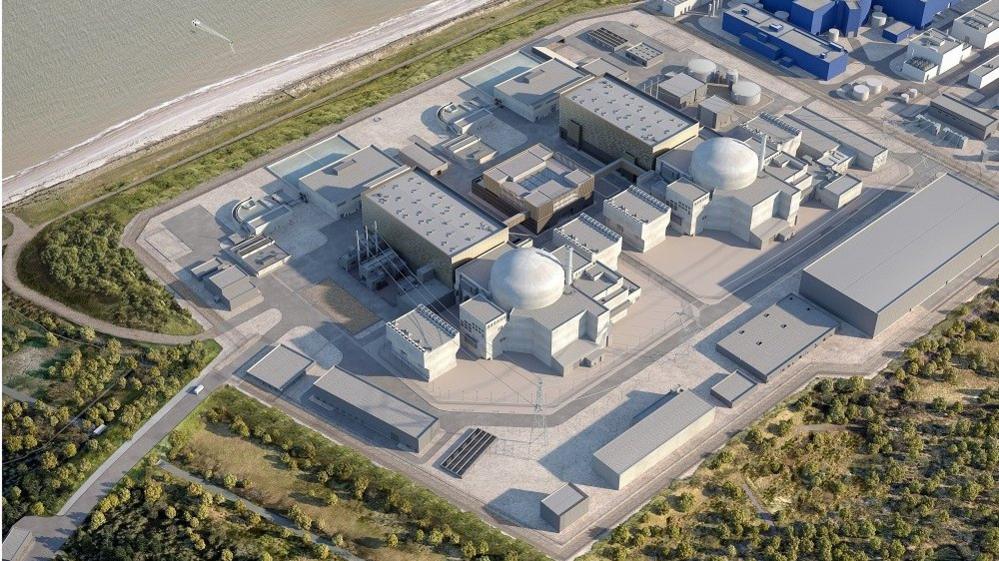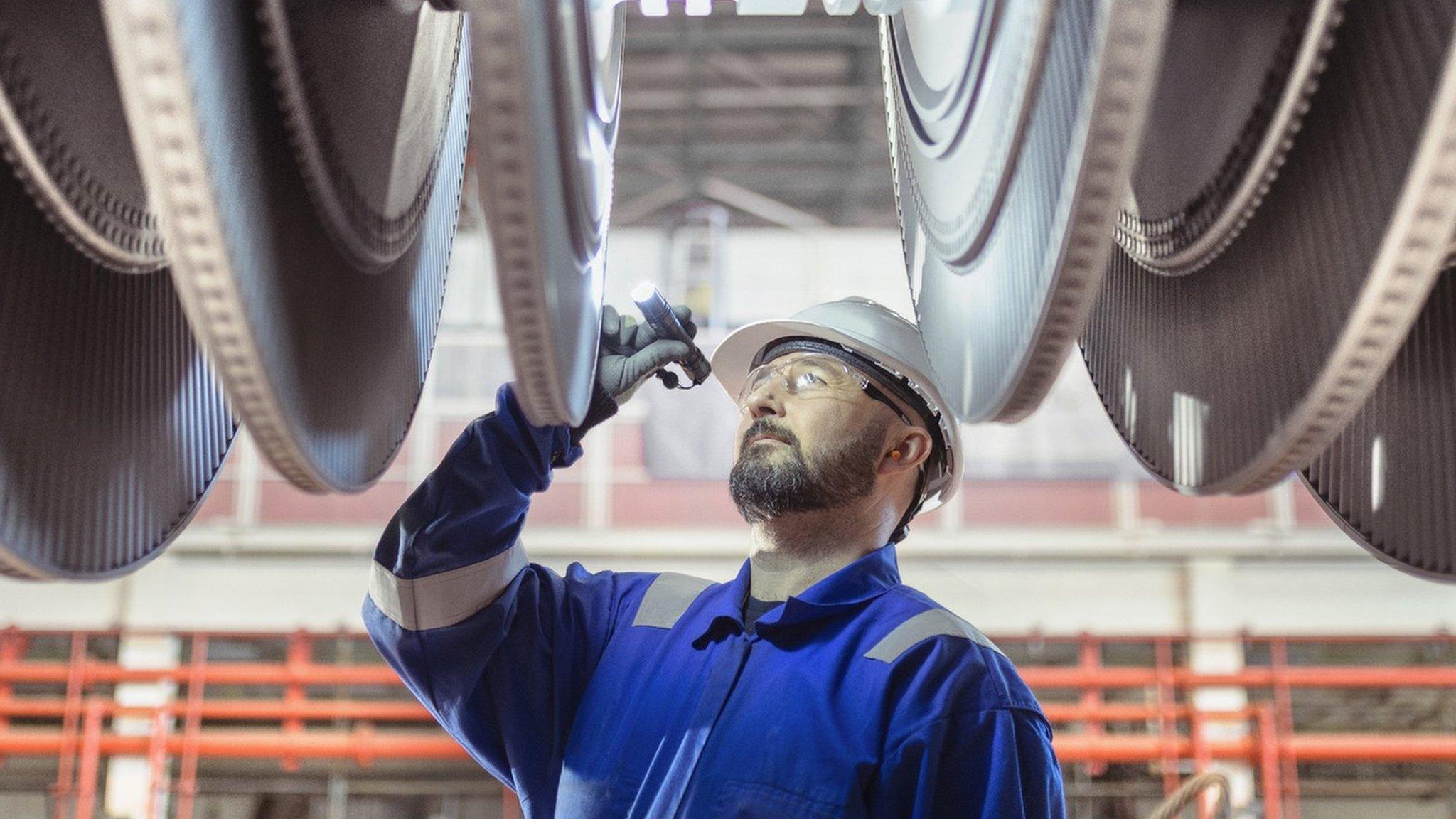Wylfa nuclear power: Commit soon to new plant, report urges
- Published
- comments

Previous plans for a new nuclear power plant at Wylfa collapsed in 2020 due to a lack of UK government funding
UK ministers have been urged to back Wylfa on Anglesey as the site for a new nuclear power station next year at the latest, to meet energy targets.
The report, by MPs and peers, said talks should start soon on the type of nuclear technology for the project.
In September, Prime Minister Rishi Sunak hinted that Wylfa would be named as a preferred location within months.
The original Wylfa nuclear power station ended electricity generation in late 2015.
Speaking before the Conservative conference, Mr Sunak called Wylfa a "fantastic site" that could accommodate both small modular reactors (SMRs) and a larger plant.
He said that "Wylfa is somewhere that could do both" and the preferred sites would be announced later this year.
SMRs, large parts of which could be built off-site and transported, would be smaller and are thought to be cheaper to construct than traditional reactors.
But they are still in the development stage, as the technology is unproven.
Six companies were selected by ministers to put forward plans for SMRs, with the aim of announcing in the spring which ones will get government support.
'Best site in Europe'
When the government launched its British Energy Security Strategy last year, Wylfa was mentioned as one of the sites that could get the go-ahead for a new nuclear development.
Ministers want 24 gigawatts (GW) of Britain's electricity, 25% of projected demand, to be nuclear generated by 2050.
Published on Friday, the All-Party Parliamentary Group on Nuclear Energy report is entitled "Made in Britain: The Pathway to a Nuclear Renaissance".
It said a large-scale nuclear power station on Anglesey would be critical to provide the additional 15 GW of electricity needed once the new Hinkley Point C in Somerset, Sizewell C in Suffolk and the first SMRs are online.
The review described Wylfa as "the best site in Europe for large-scale nuclear".
It also called for the setting up of a taskforce with members from across government departments to pick a partner to build and run the new nuclear development.

Conservative Ynys Môn MP Virginia Crosbie, a vice-chair and secretary of the parliamentary group, said Wylfa had a "willing and skilled host community that is eager to see nuclear return to the island and all the benefits that would bring for many years to come".
"But we need to get on with building nuclear stations as a matter of urgency, not only for the sake of our planet and our energy security, but also for the communities like those on Anglesey who are set to benefit in a big way from new projects."
Plaid Cymru's Liz Saville Roberts, MP for Dwyfor Meirionnydd and also a vice-chair of the group, said the "best use of Wales' two nuclear licensed sites - Wylfa and Trawsfynydd [in Gwynedd] - is essential if we are to grasp the urgent need to increase the contribution of nuclear power to the net zero energy mix".
"Wylfa is ideal for large-scale generation, and should be safeguarded for such use if further gigawatt reactors are backed, while Trawsfynydd is the perfect site for small modular reactors or an advanced modular reactor."
Trawsfynydd stopped generating electricity in 1991, after operating for 25 years, and is in the long process of being decommissioned.
In May, a report by MPs on the Welsh Affairs Committee called on ministers to show "more concrete commitment" to a new nuclear power station at Wylfa, warning that the scrapping of Hitachi's bid to build one, in 2020, had left "scars on the local community".
How has the UK government responded?
A spokesperson for the government's Department for Energy Security and Net Zero said: "We welcome this report and share their ambitions for nuclear power in the UK."
They added: "Wylfa is a candidate for new nuclear, and one of several potential sites that could host civil nuclear projects.
"We will consult later this year on a proposed way forward for determining how new nuclear developments might be located, including the potential for SMR and other advanced nuclear technologies."

CROSSBOW KILLER: Investigating the case of a Welsh murder stranger than fiction
ACID DREAM: How a Welsh farmhouse sparked a revolution of the mind

- Published28 September 2023

- Published3 March 2023

- Published2 November 2023

